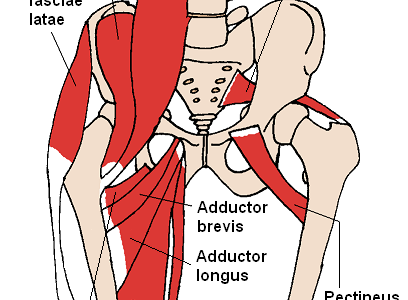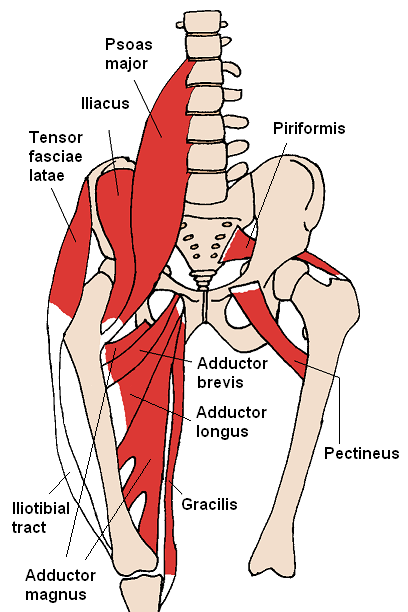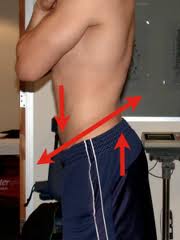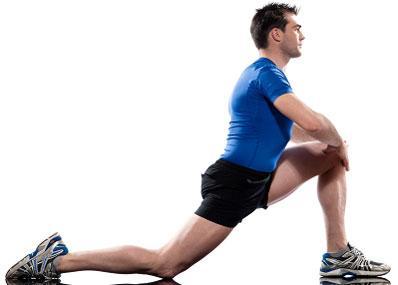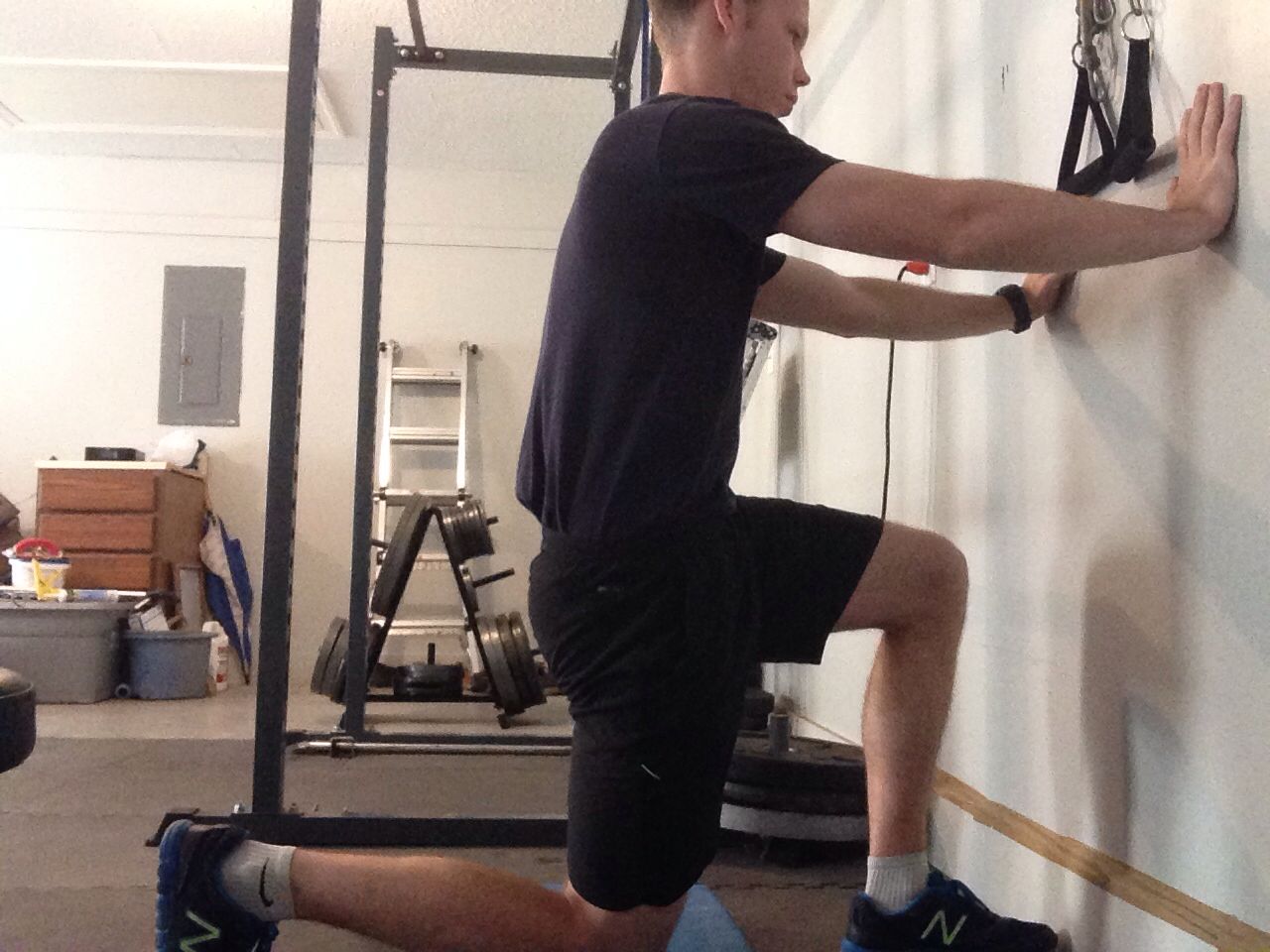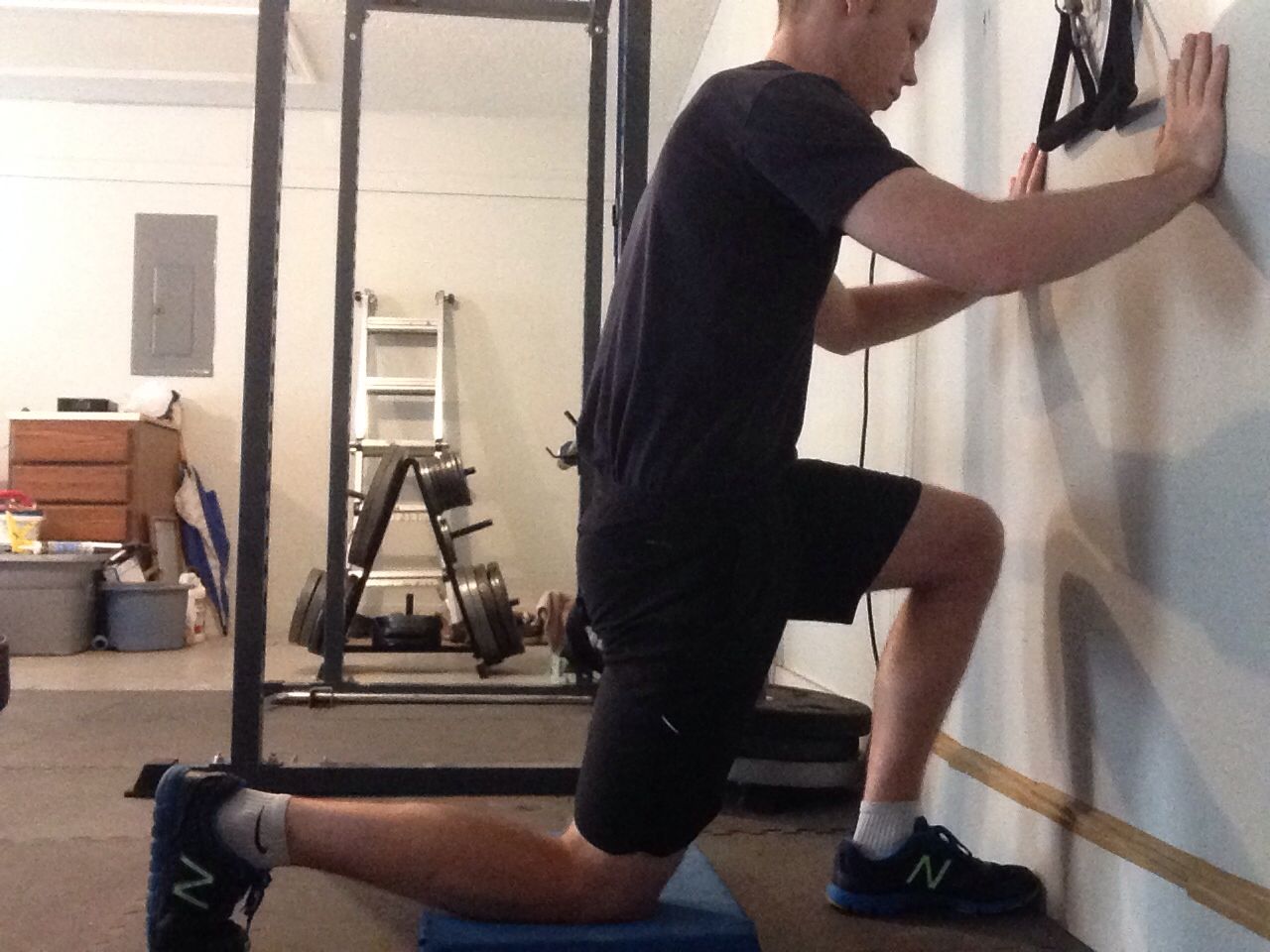Hip flexion is the act of raising the thigh toward the trunk or bending the trunk toward the thigh. There are several muscles that create hip flexion such as the Iliacus, Psoas, Rectus Femoris, Sartorius, and Tensor Fascia Latae (TFL). There are also a couple muscles that assist in hip flexion such as the Adductor Brevis and Pectinius.
Overall, the hip flexors get a bad rap because they are constantly “tight” for many people. That’s why hip flexor stretching is so common among gym goers. But why is this?
One of the main actions these muscles perform is to anteriorly (forwardly) tilt the pelvis. In normal everyday posture this is not a good thing.
This creates a misalignment of the pelvis which can result in pain and discomfort, especially at the low back. If you look at the picture below, you can see this person has an anteriorly tilted pelvis because his waist line is much higher towards the back.
In this position, it feels like your hip flexors and the muscles in your low back are always tight.
One of the most common reasons this occurs is because we sit for long periods during the day. In a seated position, your hips are constantly flexed, which shortens the hip flexor muscles.
Imagine those muscles being in a shorted state for 6-8 hours each day. They will probably become pretty tight, right? Hence the need to always stretch.
And what is the go-to stretch for the hip flexors? Take a look at the picture below.
Type in hip flexor stretch on google and you will see tons of pictures like this.
But look at the position of this person’s pelvis. It’s has a slight anterior tilt. Not as much as the picture above, but it’s still there.
So if the hip flexors tilt the pelvis forward and you are stretching the hip flexors by tilting the pelvis forward, are you stretching the hip flexors?
Nope. You are actually shortening them even more. On a side note, you are also jamming the head of your femur forward in the hip capsule. Over time this can also be the cause of irritation at the front of the hip.
And yet this is how most people advocate stretching the hip flexors.
Well, I want to show you a better stretch called the Rocking Hip Flexor Stretch. I use it constantly, and it’s awesome. It’s better because it actually places the pelvis in the correct position to allow for a great stretch.
Before I do that, I want to mention that many people who present with tight hip flexors also present with Lower Body Crossed Syndrome (LBCS).
You’ll notice that in LBCS the hip flexors and erector spinae are short/tight, while the glutes and abs are long/weak. This is an unfortunate consequence of a forwardly tilted pelvis.
So in order to effectively stretch the hip flexors, we need to lengthen the erector spinae and hip flexors while shortening the glutes and abs. We do this with a posterior pelvic tilt.
How to do the Rocking Hip Flexor Stretch
1. First, you will need to take a Half Kneeling position against a wall with a pad placed under your knee.
2. The next step is to contract your glute on the down leg while also contracting your abs. This will create that posterior pelvic tilt. When you do this, you should feel a slight stretch at the front of the hip. THOSE are your hip flexors!
You can see my shorts wrinkling in the back. That is a good sign your glutes are contracting.
3. From here, gently rock forward just to get a little extra stretch. You do not need to go very far. Make sure to maintain a straight line from your ear to your knee.
Maintaining that posture ensures your pelvis stays in the correct position to lengthen the hip flexors.
4. Hold for 1-2 seconds then return to the start. Repeat for 8-10 reps on each side.
******
This stretch is great not only because it lengths the hip flexors, but it also forces you to contract your abs and glutes. Those muscles are very important to being pain free.
In traditional stretches, you aren’t actually stretching the hip flexors. You are further exacerbating LBCS. If you continue to do this, your hips will always feel tight.
If someone presents with LBCS, their abs and glutes have lost a lot of strength. Because of this, the erector spinae and hip flexors have to take over the extra workload.
This is not the most efficient way to do things, so those muscles eventually become overworked. The end result is usually pain and dysfunction.
The Rocking Hip Flexor stretch is a great way to combat this problem because it activates the underworked muscles (glutes and abs) and relaxes the overworked muscles (hip flexors and erector spinae). Give it a try and let me know what you think!
If you are looking for a personal trainer in Savannah, contact me to set up a consultation.
And if you found any of this information helpful, or know of someone it could help please share with others!
Photo credit 1: http://en.wikipedia.org/wiki/List_of_flexors_of_the_human_body
Photo credit 2: http://www.swolept.com/posts/fixing-anterior-pelvic-tilt-posture-tricks-to-make-your-butt-and-gut-smaller
Photo credit 3: http://centerforspinaldisorders.com/spine-surgery/news/hip-flexor-stretch-to-prevent-lower-back-pain/
Photo credit 4: http://www.pt-nijmegen.nl/core.htm

